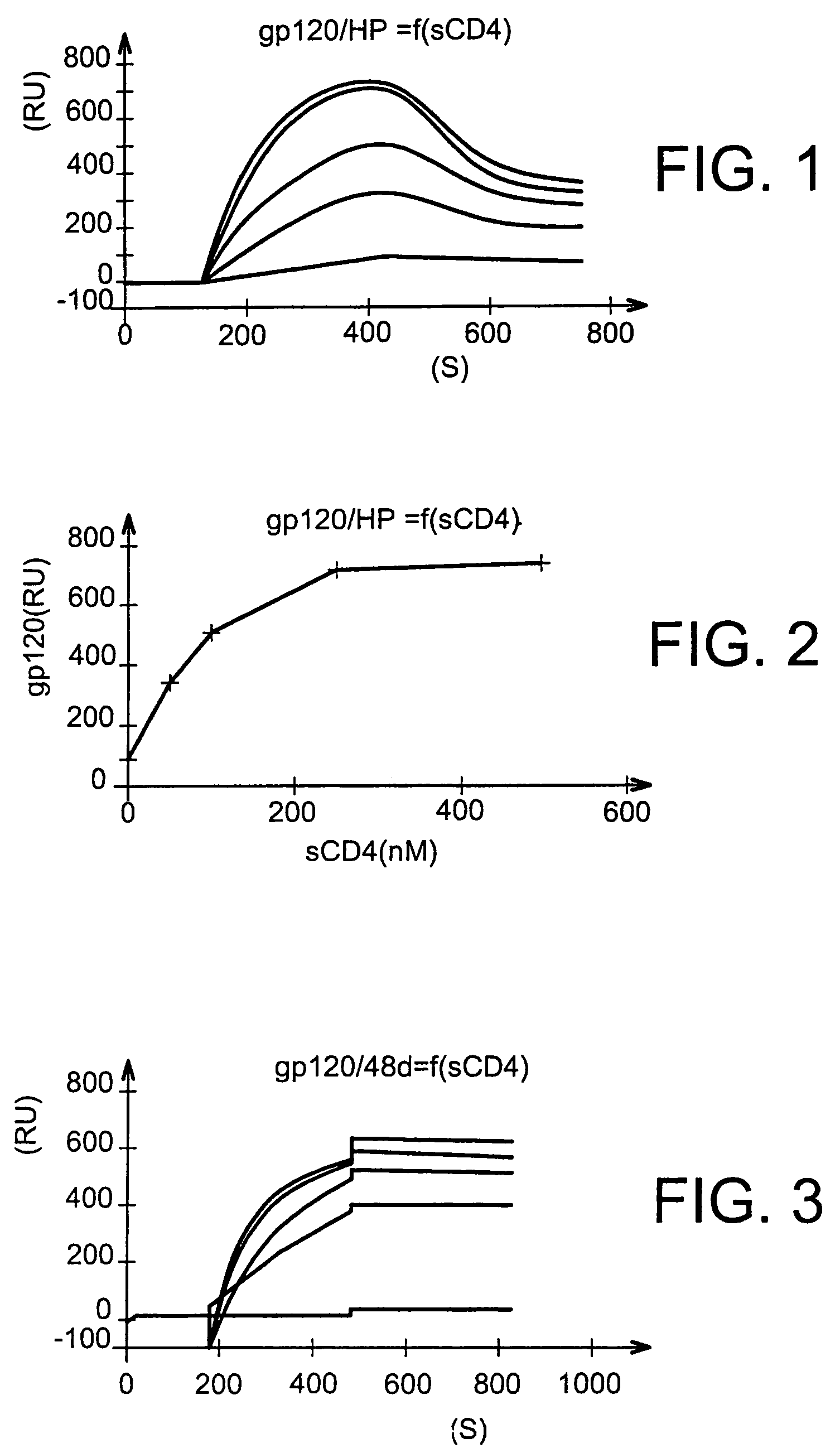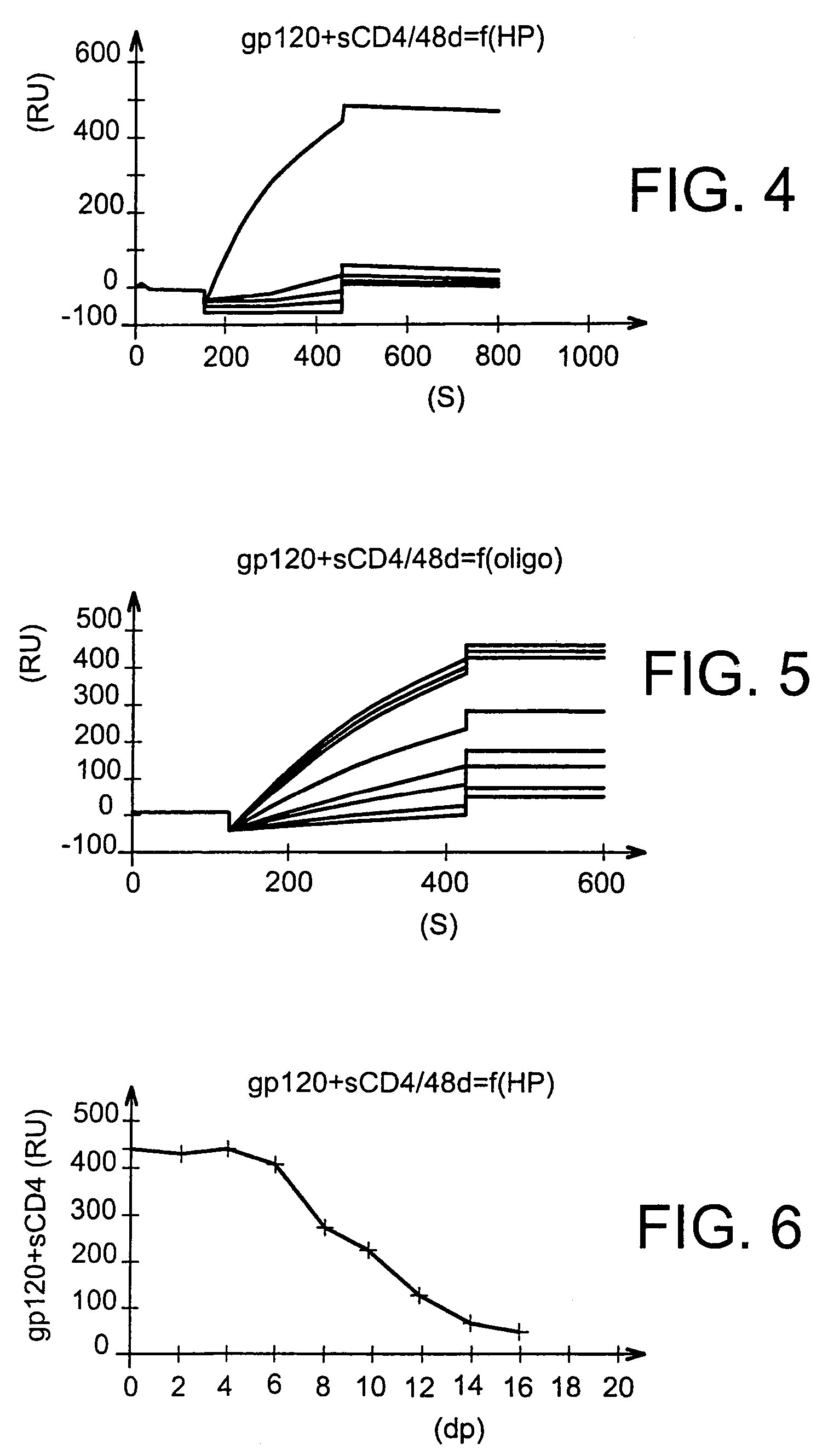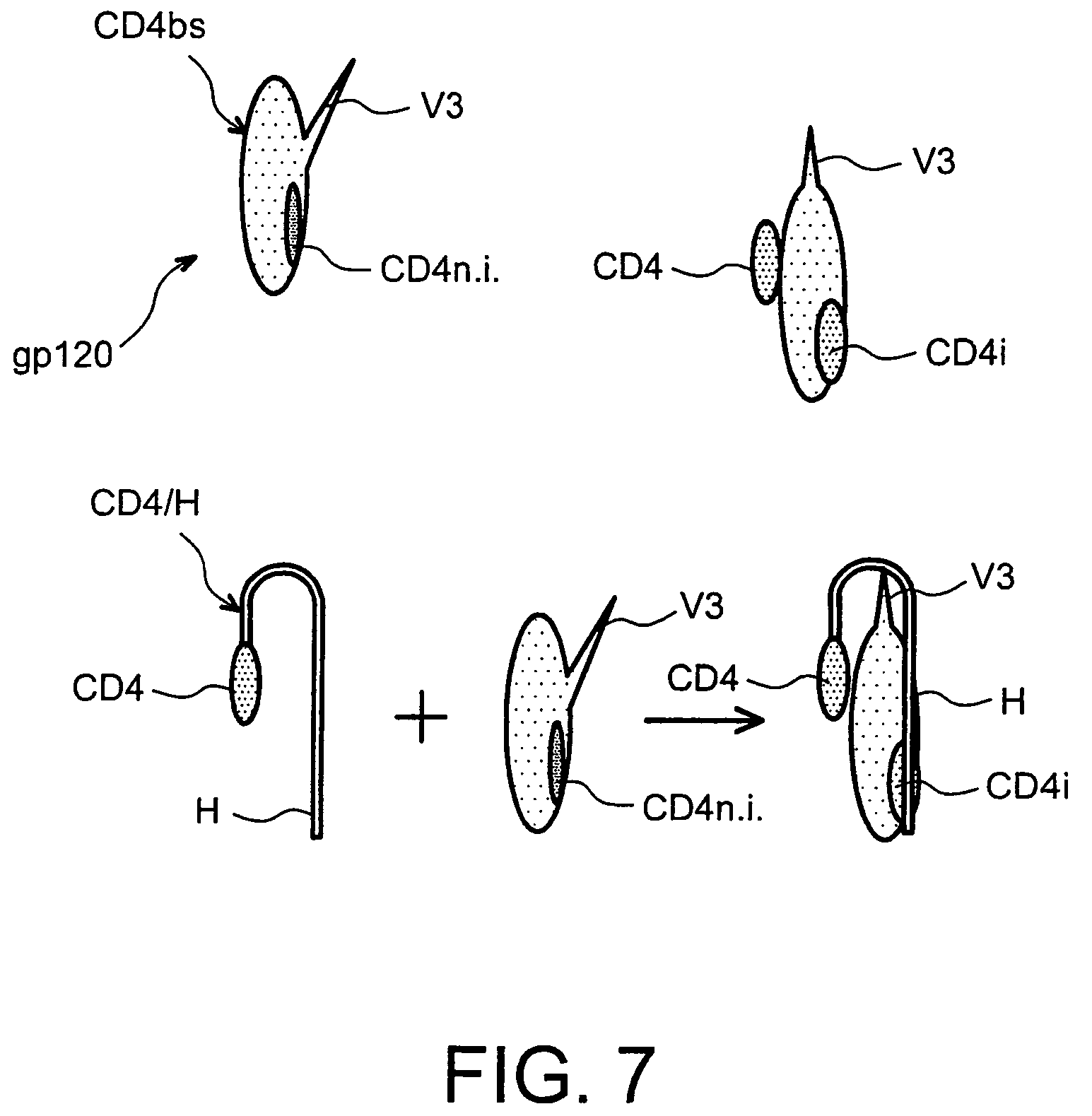Anti-HIV composition, production method thereof and medicament
a technology of composition and anti-hiv, which is applied in the field of anti-hiv composition, can solve the problems of not being able to completely eradicate the virus from the body, increasing the viral load in the plasma, and being unable to completely eliminate the virus. , the effect of increasing the viral load
- Summary
- Abstract
- Description
- Claims
- Application Information
AI Technical Summary
Benefits of technology
Problems solved by technology
Method used
Image
Examples
example 1
Synthesis of a CD4 Peptide which can be used for Producing the Composition of the Present Invention
[0067]A peptide from a sequence listing attached in the appendix is synthesized by solid-phase chemical synthesis with an Applied Biosystems automatic peptide synthesizer, mod. 433A, and by Fmoc chemistry, which uses the fluorenylmethyloxycarbonyl (Fmoc) group for temporary protection of the α-amino function of the amino acids. The protective groups used to prevent the side reactions of the amino acid side chains, in this Fmoc strategy, were tert-butyl ether (tBu) for the Ser, Thr and Tyr residues; tert-butyl ester (OtBu) for Asp, Glu; trityl (Trt) for Gln, Asn, Cys, His; tert-butyloxycarbonyl (Boc) for Lys and 2,2;5,7,8-pentamethylchroman-6-sulfonyl (Pmc) for Arg.
[0068]The coupling reaction takes place with an excess of 10 equivalents of amino acids (1 mmol) relative to the resin (0.1 mmol). The protected amino acid is dissolved in 1 ml of N-methylpyrrolidone (NMP) and 1 ml of a 1 M s...
example 2
Synthesis of Polyanion of the Heparin or Heparan Sulphate Type, which can be used for the Composition of the Present Invention
[0076]A molecule of heparin or of heparan sulphate having a defined degree of polymerization dp is synthesized.
[0077]6 g of heparin are solubilized in a buffer containing 5 mM of Tris, 2 mM of CaCl2, 50 mM of NaCl and 0.1 mg / ml of albumin. The pH is adjusted to 7.5 with acetic acid. This solution is incubated at 25° C. with heparinase I (8 mU / ml) for approximately 50 h (the enzymatic reaction is monitored by means of the increase in optical density, measured at 232 nm).
[0078]The mixture is then purified by gel filtration chromatography. The solid phase is Biogel P10, contained in a 1.50 m column 4.4 cm in diameter, eluted at 1 ml / min with 0.25 M NaCl.
[0079]FIG. 11 represents the absorbance at 230 nm of the various fractions of 15 ml obtained for degrees of polymerization dp ranging from 2 to 10.
[0080]The various oligosaccharides (dp2, dp...
example 3
Synthesis of a Composition of the Present Invention: Mixture of a CD4 Peptide with a Polyanion
[0083]In this example, a CD4 peptide of Example 1 is mixed with a heparan sulphate prepared in Example 2.
[0084]These two molecules are dissolved at a concentration that is two times the desired final concentration. These solubilizations are carried out in a physiological buffer; for example, PBS, TBS (50 mM Tris, 0.15 M NaCl, pH 7.5) or HBS (20 mM Hepes, 0.15 M NaCl, pH 7.5).
[0085]The two preparations are then mixed volume for volume (1 / 1).
PUM
| Property | Measurement | Unit |
|---|---|---|
| pH | aaaaa | aaaaa |
| pH | aaaaa | aaaaa |
| pH | aaaaa | aaaaa |
Abstract
Description
Claims
Application Information
 Login to View More
Login to View More - R&D
- Intellectual Property
- Life Sciences
- Materials
- Tech Scout
- Unparalleled Data Quality
- Higher Quality Content
- 60% Fewer Hallucinations
Browse by: Latest US Patents, China's latest patents, Technical Efficacy Thesaurus, Application Domain, Technology Topic, Popular Technical Reports.
© 2025 PatSnap. All rights reserved.Legal|Privacy policy|Modern Slavery Act Transparency Statement|Sitemap|About US| Contact US: help@patsnap.com



